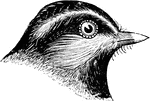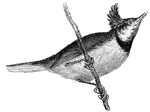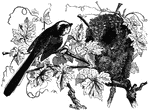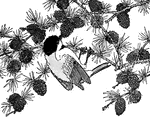Clipart tagged: ‘chickadee’

Black-capped Chickadee
"Crown and nape, with chin and throat, black, separated by white sides of the head. Upper parts brownish-ash,…

Mountain Chickadee
"Upper part ashy-gray, with scarcely a shade, and only on the rump, under parts similarly grayish-white,…

White-breasted Nuthatch
Nightingale, a small creeping bird seen running up and down the trunks of trees, getting its name from…

Tit Bird
The tits, chickadees, and titmice comprise Paridae, a large family of small passerine birds which occur…

Crested Titmouse
The tit is indeed the incarnation of motion; it is continually skipping from branch to branch...(Figuier,…

Long-Tailed Titmouse
The most noted of the titmice, the long-tailed titmouse is about five and a half inches in length, half…

